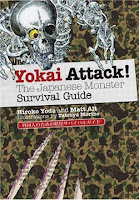 Author: Eiji Yoshikawa
Author: Eiji Yoshikawa
Translator: Charles S. Terry
U.S. publisher: Kodansha
ISBN: 9784770019578
Released: July 1981
Original run: 1935-1939 (Asahi Shimbun)
I first learned about Eiji Yoshikawa’s epic historical novel Musashi while looking for a translation of Miyamoto Musashi’s Book of Five Rings. The group of people I was asking for recommendations insisted that I give Yoshikawa’s fictionalization of Musashi’s life a try as well. Yoshikawa’s envisioning of Musashi has been the inspiration for a large number of samurai films and is the basis for Takahiko Inoue’s manga series Vagabond. Musashi was originally serialized in Japan between 1935 and 1939. The English translation by Charles S. Terry was published by Kodansha International in 1981. The book doesn’t indicate it anywhere, but apparently the English edition is actually an abridgement. The original is nearly four thousand pages long. However, the English translation’s nine hundred seventy pages of relatively small print is not really anything to scoff at, either.
Much of Yoshikawa’s Musashi is based on historical reality and while they are fictionalized (and it is important to remember that), many of the events and people portrayed actually existed. Musashi is one of Japan’s most notable and recognizable swordsmen. Musashi begins with the aftermath of the Battle of Sekigahara in which a young Musashi, then known as Takezō, fought and managed to survive. It ends with one of Musashi’s most famous duels as he faces the highly skilled Sasaki Kojirō. In between, the novel traces his efforts to develop his own style of swordsmanship, resulting in the foundation of his innovative two sword technique. At the same time, Japanese society is undergoing great change as the Tokugawa shogunate more firmly establishes its control over the country.
Although the novel’s title is simply Musashi, the cast of characters is quite large. In addition to Musashi, the tale also follows those who seek to be close to him, his peers and rivals, friends, adversaries, and mentors. Many of the encounters between these people seem to happen by chance or fate, and sometimes the coincidences are a bit much, but it does make for a good story. For the most part, the characters grow and change as the novel progresses. Some of the changes happen suddenly while others develop more naturally over time. Musashi, too, is a significantly different person by the end of the book than he is when it first begins. He may be a legendary swordsman, but in Musashi he is shown to be completely human as well. He, like all the other characters, makes mistakes and stupid decisions, but he is shown to be willing to learn from them.
The pacing of Musashi is much more leisurely than one might expect for a novel about a man striving to better himself by following the Way of the Sword. Although Musashi is constantly training and is involved in many cinematic duels and battles, most of the book is of a quieter, more philosophical bent. Musashi brings what he learns from everyday life to his swordsmanship and in return applies the Way of the Sword to his way of life, believing the two are one and the same. Some might feel the novel drags on, and its length is certainly felt even in abridged form, but I was actually quite happy with it. I would like to read the novel in its entirety, but Terry’s translation and abridgement is excellent. While it occasionally feels slightly disjointed, overall the narrative flows very nicely. However, the ending comes abruptly. In some ways this lends to the creation of the myth and legend of Musashi, but it still seemed very sudden to me. Regardless, I am very glad I took the time needed to read and experience Yoshikawa’s Musashi.

